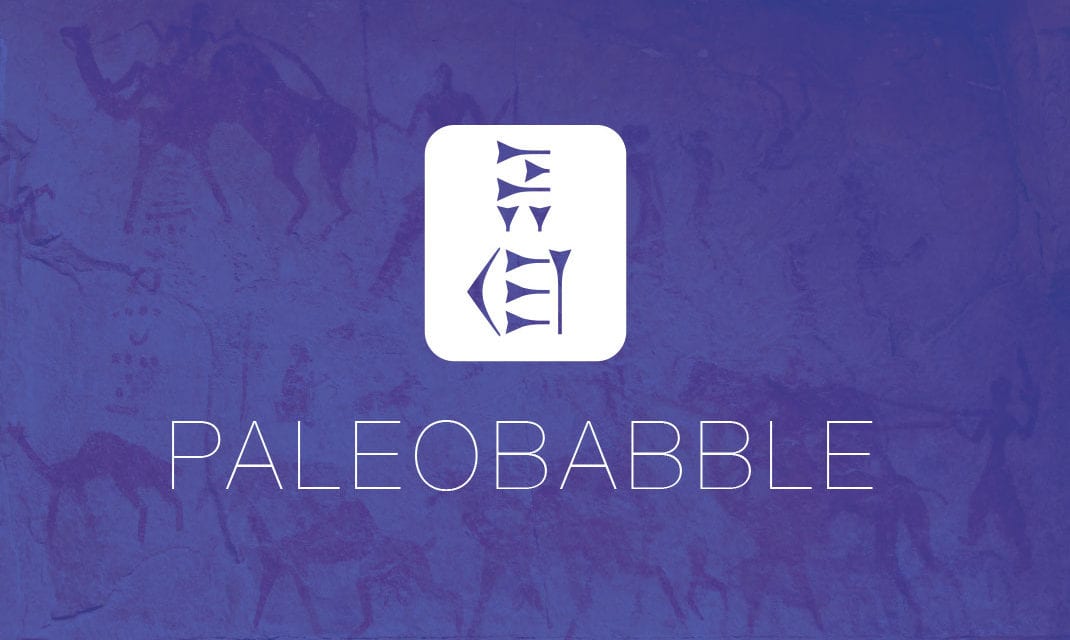I don’t usually post the same content to more than one blog, but it occurred to me that my newest post over at Naked Bible might be useful. It follows below with some slight alteration for this blog. My point for PaleoBabble readers is really my last paragraph. If you read Greek and have some interest in Bart Ehrman and the textual transmission of the New Testament, you may find this interesting.
>>
I’ve posted on Bart Ehrman and his work several times before on the Naked Bible blog (e.g., here and here). My contention with Bart is that he’s a fundamentalist — someone who is unwilling to process an issue in any other way than the black-and-white, either-or fallacy that he himself has framed. I’m sympathetic to him only in the sense that some acute personal suffering appears to be behind his fundamentalism. While I wish there was something I could do to help in that regard, I also have to be honest and say that it seems quite clear that Bart’s personal pain has skewered his scholarship. He’s human.
My greater irritation is the way the masses (aided and abetted by a pathologically ignorant media) swallow whatever Bart says as though its some grand, now self-evident discovery, or think that no one can be looking at the same data and still believe in the reality of the Christ of the gospels. Wrong on both counts. There are many scholars who do what Bart does (textual criticism, New Testament studies) who draw conclusions contrary to Ehrman’s and, more importantly, are capable of judging his method and scholarship.
In that spirit I wanted to draw your attention to something that popped up on the Evangelical Textual Criticism blog today. One of its regular contributors, textual critic Tommy Wasserman, has posted a version of his most recent Journal of Theological Studies article entitled, “The ‘Son of God’ was in the Beginning (Mark 1:1).” The article is about whether the phrase “son of God” is original or — a la Bart Ehrman — was added by “orthodox scribes” who wished to add their theology to Mark’s original gospel.1 Wasserman’s article is a textbook example of a careful, scholarly response to this idea in a specific passage through examination of the text-critical data, not his own brand of fundamentalism. In the course of the article he responds to arguments put forth by various scholars that the shorter reading (the one without “Son of God”) is the authentic reading. One of those is Ehrman’s own article, “The Text of Mark in the Hands of the Orthodox,” LQ 5 (1991): 149–52.2 Unfortunately, since this is a scholarly text-critical argument, it’s really only acessible to those who read Greek (first year level or beyond). It helps to have had some exposure to manuscript symbols as well, but that isn’t essential.
Wasserman’s conclusion reads as follows:
The external evidence clearly favours the inclusion of uios theos [“son of God”] in Mark 1:1. The long reading has the earliest and strongest support by manuscripts, as well as versional and patristic witnesses and the text-types to which the witnesses have traditionally been assigned. The short reading has early and widespread, but much weaker, support. The internal evidence, to which the defenders of the short reading have normally appealed, is actually ambiguous. The traditional intrinsic argument from Markan style in favour of the long reading is possibly balanced by the corresponding possibility of a stylistic scribal addition.
In regard to transcriptional probability, an early accidental omission, even in the opening of a book, cannot be ruled out, since this apparently happened on several occasions in the history of transmission in Mark 1:1 and elsewhere. This argument, however, is balanced by the general tendency to expand book titles as well as divine names and titles. In conclusion, the balance of probabilities favours the long reading in Mark 1:1—the ‘Son of God’ was indeed in the beginning.
Again, so the point is not missed, the issue is that there is more than one way to look at New Testament manuscript data. Ehrman isn’t discovering something new and unknown to scholars. He isn’t putting forth unassailable arguments that make the faithful run for the hills. He’s arguing his position based on how he sifts the data — i.e., his views are simply interpretations, nothing more — and other professionals in his own field might conclude other interpretations are more reasonable. And, of course, even if Ehrman was right about imported scribal thoughts in Mark 1:1, that is no logical argument that he is right in other New Testament passages. There’s really no coherent way to defend the idea that all the original New Testament writers in all places in the New Testament would not have espoused at least a binitarian (“godhead of two”) monotheism of the type reflected in New Testament Christology. There is too much evidence for such thinking in *Jewish* writers centuries prior to the New Testament.
- This is the thrust of Ehrman’s scholarly work, The Orthodox Corruption of Scripture, the argument of which was put out to the lay public in his popular title, Misquoting Jesus: The Story Behind Who Changed the Bible and Why. ↩
- A distillation of Ehrman’s arguments on Mark 1:1 is found in The Orthodox Corruption of Scripture, pp. 72–75. ↩






Am still studying your comments….Thanks so much for another view of Bart’s position. I am just finishing a third book by Ehrman and, although feeling very disappointed and mislead, I thought it couldn’t be so one sided.
FYI: Please refer to (Naked Bible blog (e.g., here and here) above; the link gives an error. However, I was able to find it on The Naked Bible….Thanks again for this and your ministry in general!